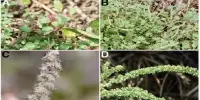Switching from dangerous to useful fungi necessitates an awareness of the many species of fungi, their roles, and how to promote beneficial fungi while limiting hazardous ones. Fungi can be both beneficial and detrimental, and regulating their presence in agriculture, gardening, and ecosystem restoration can all benefit from their existence.
Mold and fungi-caused diseases can have a significant impact on the shelf life of fruits and vegetables. Some fungi, on the other hand, help their hosts by increasing plant survival. Colletotrichum tofieldiae (Ct) is a root mold that normally promotes continuous plant development even when the plant is deficient in phosphorus, a critical nutrient for photosynthesis and growth. Researchers investigated a novel pathogenic strain of fungi known as Ct3, which suppresses plant growth in the other direction.
They discovered that activation of a specific fungal secondary metabolism gene cluster indicated the fungus’s detrimental influence on the host plant by comparing beneficial and hazardous Ct strains. When the cluster was disturbed, either genetically or by environmental change, the fungi’s behavior shifted from inhibiting to stimulating development. Understanding mechanisms like these could aid in reducing food waste by leveraging the beneficial function that fungi can play in the food chain.
Plant-associated fungi show varied infection lifestyles ranging from mutualistic (beneficial) to pathogenic (harmful) depending on the host enviroment. However, the mechanisms by which these microbes transit along these different lifestyles remain poorly understood.
Kei Hiruma
It’s always disheartening and unpleasant when your fresh strawberries become fuzzy with mold or your grapes turn gray and shrivel at the bottom of the fruit bowl. Botrytis is a disease-causing fungus that wreaks havoc on food crops all over the world and is easily transmitted by wind and soil. Many fungi, on the other hand, have a less harmful connection with their host plants, even creating alliances that can assist the plant thrive. Promoting favorable fungal features and reducing undesired outcomes (such as rotting fruit) will considerably benefit global food security and help decrease massive amounts of food waste.
“Plant-associated fungi show varied infection lifestyles ranging from mutualistic (beneficial) to pathogenic (harmful) depending on the host environment. However, the mechanisms by which these microbes transit along these different lifestyles remain poorly understood,” said Associate Professor Kei Hiruma from the Graduate School of Arts and Sciences at the University of Tokyo.
“We used comparative transcriptomic analysis to examine genetic information from different strains of the root fungus Colletotrichum tofieldiae, allowing us to study differences in gene expression between each strain. Surprisingly, we discovered that a single fungal secondary metabolism gene cluster known as ABA-BOT regulates whether the fungus has harmful or mutualistic tendencies toward the host plant.”

Colletotrichum tofieldae is a fungus that often benefits plants when they are deficient in phosphorus, allowing them to survive despite the lack of this essential nutrient. It has even been demonstrated to boost the growth and production of economically vital crops like maize and tomatoes. The multi-institutional team employed thale cress as the host plant in this investigation and sourced six strains of Ct from various geographical places to infect it with. Five strains considerably increased plant development, as expected, but a sixth strain, Ct3, was discovered to block nutrient uptake, reducing plant growth and causing disease symptoms. So, what prompted this abrupt shift?
“We identified two key points: First, on the fungal side, that Ct3 activates the ABA-BOT biosynthesis gene cluster; and second, on the plant side, that Ct3 induces the host plant’s ABA signaling pathways, through which the fungus inhibits plant growth,” explained Hiruma. The researchers found that both pathogenic and mutualistic strains of Colletotrichum tofieldae contain the ABA-BOT gene cluster, but mutualistic strains did not express it, i.e., the genes were not activated. The discovery came as a surprise, as conventionally pathogens and mutualists were thought to have distinct characteristics, but these findings suggest that they are more intricately related.
When the gene cluster was disrupted, either genetically or by modifying the plant’s environment, Ct3 became nonpathogenic and even beneficial to the host, boosting root growth. Although more research is needed, it indicates that the ABA-BOT gene cluster may play a role in disease in fungi other than Ct species. It could, for example, be implicated in the pathogenesis of Botrytis, which affects our home fruits and vegetables.
“If we gain a comprehensive understanding of the regulatory mechanisms governing the fungal secondary metabolism gene cluster, we can devise a method to selectively suppress potential pathogenesis in otherwise beneficial fungi, optimizing their utilization in agriculture and harnessing the full potential of the microbial diversity naturally present in soil ecosystems,” said Hiruma.
















